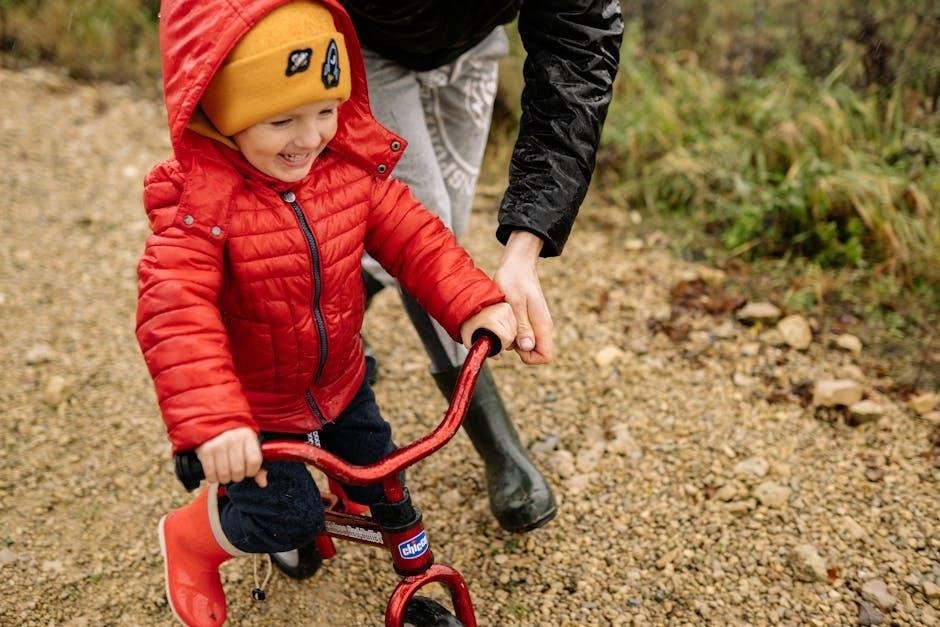
bike fork cutting guide
Setting up a new fork requires cutting a steerer tube, a straightforward process with the right tools and care, as shown in this
guide
, ensuring proper length for stability and function, using a tool to secure the tube in a vice with a large clamping area always․
Importance of a Guide
A bike fork steerer Seatpost cut saw guide is essential to ensure that the steerer tube and Seatpost of a bike are cut to the proper length․ If the steerer tube is cut too short or too long, the bicycle may not function properly or be stable․ This guide tool helps to ensure that the cutting process is accurate and safe․ The importance of a guide cannot be overstated, as it provides a secure and stable way to cut the steerer tube, preventing damage to the surrounding components․ By using a guide, the risk of error is minimized, and the cutting process is made much simpler․ A good guide will also help to prevent the cut from being uneven or at an angle, which can affect the overall performance of the bicycle․ Furthermore, a guide can help to reduce the risk of injury to the person performing the cutting, by providing a secure and stable platform for the cutting tool․ Overall, the importance of a guide in the bike fork cutting process cannot be overstated, and it is a crucial tool for anyone looking to cut their steerer tube accurately and safely․ The guide is a simple but essential tool that can make a big difference in the outcome of the cutting process․

Tools Required for Cutting
A cut saw guide and a vice with a large clamping area are necessary tools for cutting a steerer tube, ensuring a secure and stable cutting process with accuracy and safety always, using the right tools for the job is essential․
Types of Cutting Guides

There are various types of cutting guides available for cutting a steerer tube, including those from Park Tool and Abbey Tools, which offer a range of features and benefits․ These guides are designed to ensure accurate and safe cutting, and are suitable for use with both aluminum and carbon steerer tubes․ Some guides have slots for different types of blades, such as carbon and bi-metal, allowing for versatility and convenience․ Additionally, some guides have a large clamping area, which provides extra security and stability during the cutting process․ When choosing a cutting guide, it is essential to consider the type of steerer tube being cut, as well as the level of precision and safety required․ By selecting the right cutting guide, individuals can ensure a successful and stress-free cutting experience․ Furthermore, cutting guides are an essential tool for anyone looking to cut a steerer tube, and are widely available from bike shops and online retailers․ Overall, the right cutting guide can make a significant difference in the outcome of the cutting process, and is an important investment for anyone working with bikes․ The guide is used to prevent mistakes and ensure the correct length of the steerer tube․

Process of Cutting a Steerer Tube
Cutting a steerer tube involves securing it in a vice and using a guide to ensure a straight cut, with the correct blade and technique, to achieve the desired length and a smooth finish, using a tool for accurate results always․
Precautions and Considerations
When cutting a steerer tube, it is essential to take several precautions and considerations into account to ensure a safe and successful process․ One of the most critical factors is to use the correct tools and techniques to avoid damaging the tube or surrounding components․ A guide tool is necessary to ensure a straight cut and prevent the blade from slipping and causing injury․ Additionally, the tube must be securely held in a vice to prevent it from moving during the cutting process․ It is also crucial to wear protective gear, such as gloves and safety glasses, to prevent injury from sharp edges or debris․ Furthermore, the cutting process should be done in a well-ventilated area, away from any flammable materials․ By taking these precautions and considerations into account, you can ensure a safe and successful cutting process․ It is also important to note that cutting a steerer tube is a delicate process and requires patience and attention to detail․ The process should not be rushed, and each step should be carefully planned and executed․ By following these guidelines and taking the necessary precautions, you can achieve a successful outcome and ensure the safety of yourself and others․ Proper planning and execution are key to a successful outcome․
Common Mistakes to Avoid

When cutting a steerer tube, there are several common mistakes to avoid in order to ensure a successful outcome․ One of the most common mistakes is using the wrong type of blade or cutting tool, which can result in a uneven or damaged cut․ Another mistake is not properly securing the tube in a vice, which can cause the tube to move during the cutting process and result in an inaccurate cut․ Additionally, not wearing protective gear, such as gloves and safety glasses, can put you at risk of injury from sharp edges or debris․ It is also important to avoid rushing the cutting process, as this can lead to mistakes and accidents․ Furthermore, not following the manufacturer’s instructions for the cutting guide or tool can also lead to errors․ By being aware of these common mistakes and taking steps to avoid them, you can ensure a safe and successful cutting process․ It is also important to note that cutting a steerer tube is a precise process and requires attention to detail․ A small mistake can have significant consequences, so it is essential to be careful and meticulous throughout the process․ Proper technique and patience are essential to avoiding common mistakes․

